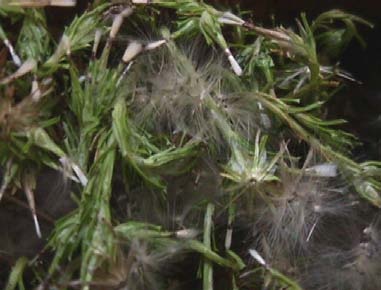Numerous lawns in Georgia are turning white.
From a distance, it may look like snow in May or cotton left over from last fall, but the "cottony" appearance is actually caused by a weed named facelis (Facelis retusa).
University of Georgia Cooperative Extension specialists say it’s too late to rid your lawn of facelis this year.
Facelis, also called annual trampweed, germinates in the fall and late winter months, produces seed in late April to June and then dies.
May is not the preferred time to control the weed as it is essentially in the process of dying.
Facelis is a winter annual member of the Aster family and reproduces by wind-blown seed.
This weed reaches heights of 4 to 6 inches and has alternate wedge-shaped leaves with a small tooth at the tip. The upper leaf surface is green, while the lower leaf surface is densely gray due to the presence of leaf hairs. Facelis flowers are very inconspicuous and the seeds have soft, white bristle-like hair.
Atrazine or 2,4-D applied during mid winter through early spring should control facelis. Read the herbicide label and apply a pesticide that is safe for your particular grass variety.
Also, since this weed is found on droughty sites with low fertility, make an effort to improve the turfgrass density by applying lime, fertilizer or increasing irrigation.
For more information on controlled weeds in the landscape, contact your local UGA Extension office at 1-800-ASK-UGA1.








